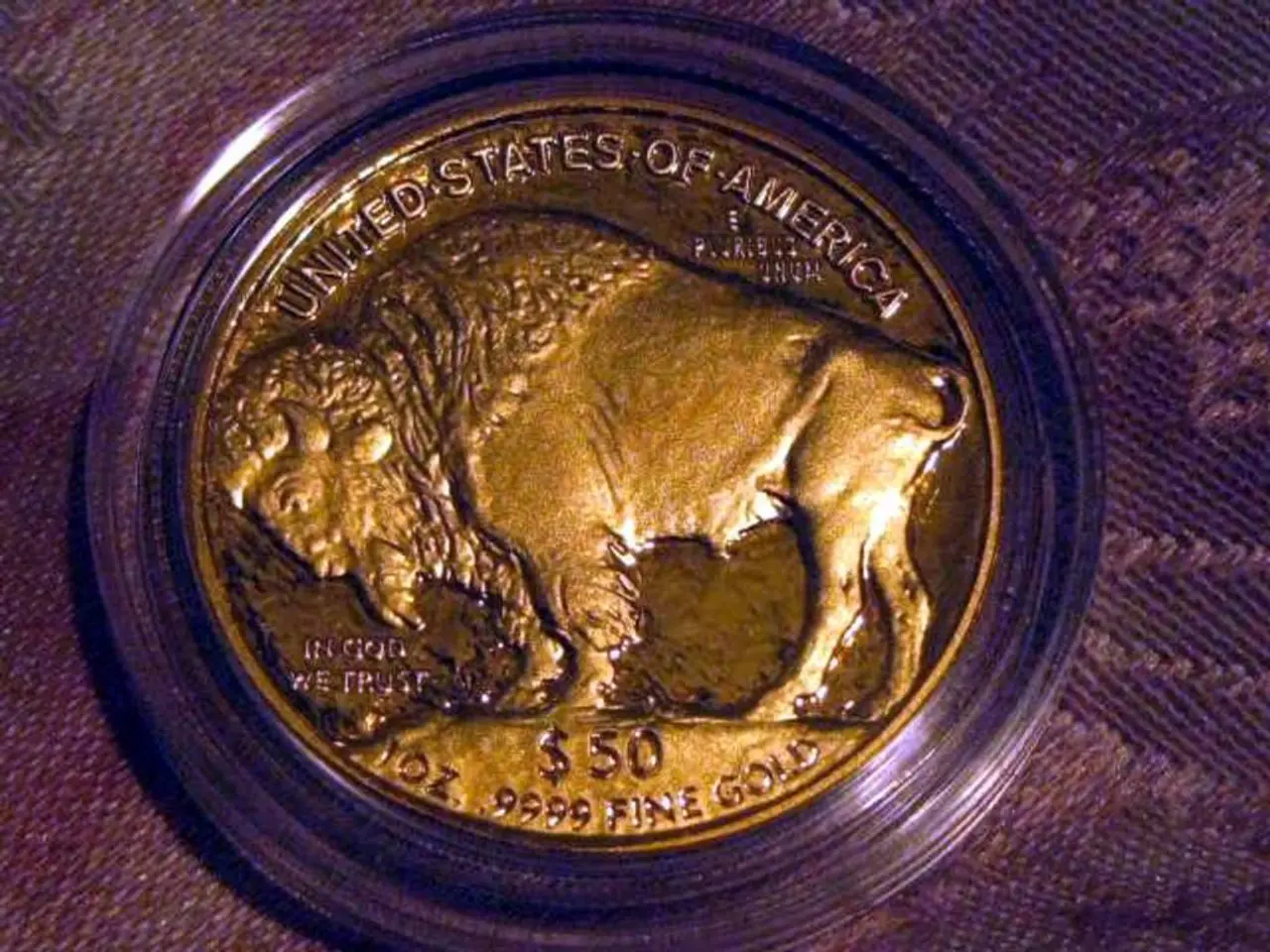Gold continues its upward trajectory, reaching a new peak of $3,600 due to increased bets on Federal Reserve interest rate cuts.
In the financial world, gold prices have been on a remarkable upward trajectory, reaching a new record high of $3,613.77 per ounce on Monday. This surge can be attributed to a combination of factors, including central bank purchases and the anticipation of a rate cut by the Federal Reserve.
Analysts expect a rate cut at the Federal Reserve's September meeting due to the labor market slowdown. The latest U.S. payrolls data showed hiring slowed sharply in August, and the unemployment rate climbed to 4.3% - its highest level since 2021. This economic downturn has increased the likelihood of a rate cut, which traditionally boosts the appeal of gold as a safe-haven asset.
The upward momentum in gold is further reinforced by central bank purchases. The People's Bank of China, for instance, has increased its gold reserves for the tenth consecutive month in August, and its continued purchases are diversifying away from U.S. dollar holdings.
While the Federal Reserve's decision is yet to be made, the potential for a more dovish appointment could further influence gold prices. If President Donald Trump dismisses Federal Reserve Governor Lisa Cook, a more accommodative monetary policy could potentially occur, further driving up gold prices.
Meanwhile, the Trump administration announced that gold bullion, along with certain metals, would be exempt from country-based tariffs. This move could stimulate demand for gold, particularly from industries that rely on these metals.
Elsewhere in the market, silver prices advanced by 0.8% to $41.87 per ounce, while platinum rose by 1.6% to $1,410.05 per ounce. Benchmark copper contracts edged higher on both London and U.S. exchanges, reflecting a broader trend of increased investor appetite for commodities.
However, the story isn't just about the United States. Istanbul stocks opened the week 1.5% lower due to escalating opposition turmoil, highlighting the interconnectedness of global financial markets.
Analysts at Goldman Sachs have suggested that if Fed independence is undermined and investors shift even a portion of U.S. Treasury holdings into gold, prices could climb toward $5,000 per ounce. With the Fed rate cut looming and central banks continuing to stockpile gold, the future looks bright for the precious metal.
Futures contracts for December gold delivery stood at $3,652.05 per ounce, indicating that investors remain bullish about the commodity's prospects. As the global economic landscape continues to evolve, gold will likely remain a key player in the financial world.







